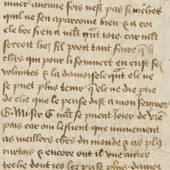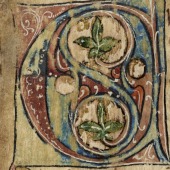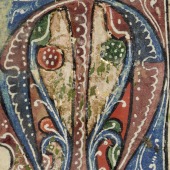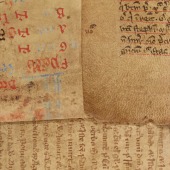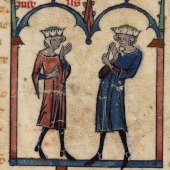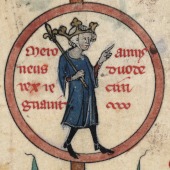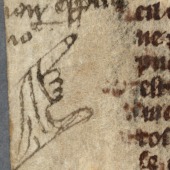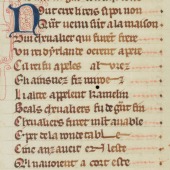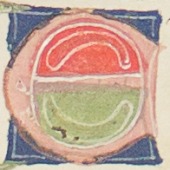Arthurian romances
The moving word
For some, the Middle Ages are seen as the cradle of the modern novel, and by the end of the period we see fiction and history beginning to part ways, at least stylistically. At the same time, however, genealogy (often fictional) and elements from legendary fiction, taken from medieval texts, were showing up in historical narratives. This process is illustrated in a number of lengthy narratives, written in Old French, about King Arthur, his wife Guinevere and the Knights of the Round Table. This so-called Matière de Bretagne, the ‘Matter of Britain’, which became one of the most enduring traditions in Western Literature, first appears in French in the twelfth century and proliferates through merging and narrative accumulation over the following three hundred years.
During the second half of the twelfth century, Chrétien de Troyes, generally considered one of the greatest of medieval authors, wrote five Arthurian romances in octosyllabic rhyming couplets: Erec et Enide, Cligés, Lancelot or Le chevalier de la charette, Yvain or Le chevalier au lion, and Perceval or Le conte du graal. They had a remarkable influence, particularly the unfinished Perceval (c. 1180–1190), to which several continuations were added. Around 1200, Robert de Boron, an author clearly aware of Chrétien’s work, wrote a Trilogy combining Perceval’s story, the life of Merlin, the destiny of Arthur’s kingdom, and several narratives based on apocryphal Christian themes and characters. These included the story of the Grail, its first manifestations in the Holy Land, and an explanation of how it was brought to Britain by the heirs of Joseph of Arimathea. The story became a medieval obsession and gave rise to a new kind of hero, the Grail-knight, who has had remarkable success and resilience in the modern era.
Around this nucleus, there arose during the first half of the thirteenth century three vast narrative cycles in prose: the Lancelot-Graal, the Tristan en prose, and the Guiron le Courtois (from which the Grail is curiously absent), together with other masterpieces, including the dark and violent Perlesvaus. Prose Arthurian cycles wove together a seemingly infinite number of characters and narrative threads, and they kept on merging and growing until at least the fifteenth century. In all, their manuscript tradition comprises over 300 witnesses spread throughout Europe, second only to that of the Divine Comedy for complexity and diffusion. Moreover, romances such as the Lancelot and the late versions of the Tristan en prose are among the longest narratives ever written. Comparable in scale to Proust’s À la recherche du temps perdu or Balzac’s Comédie humaine, they are rich and complex narratives, essential to understanding the medieval world and equally important in tracing the story of what we now think of as the modern novel.
View a video introduction to MS Add. 7071, an exhibit in ‘Arthurian romances’, here.
